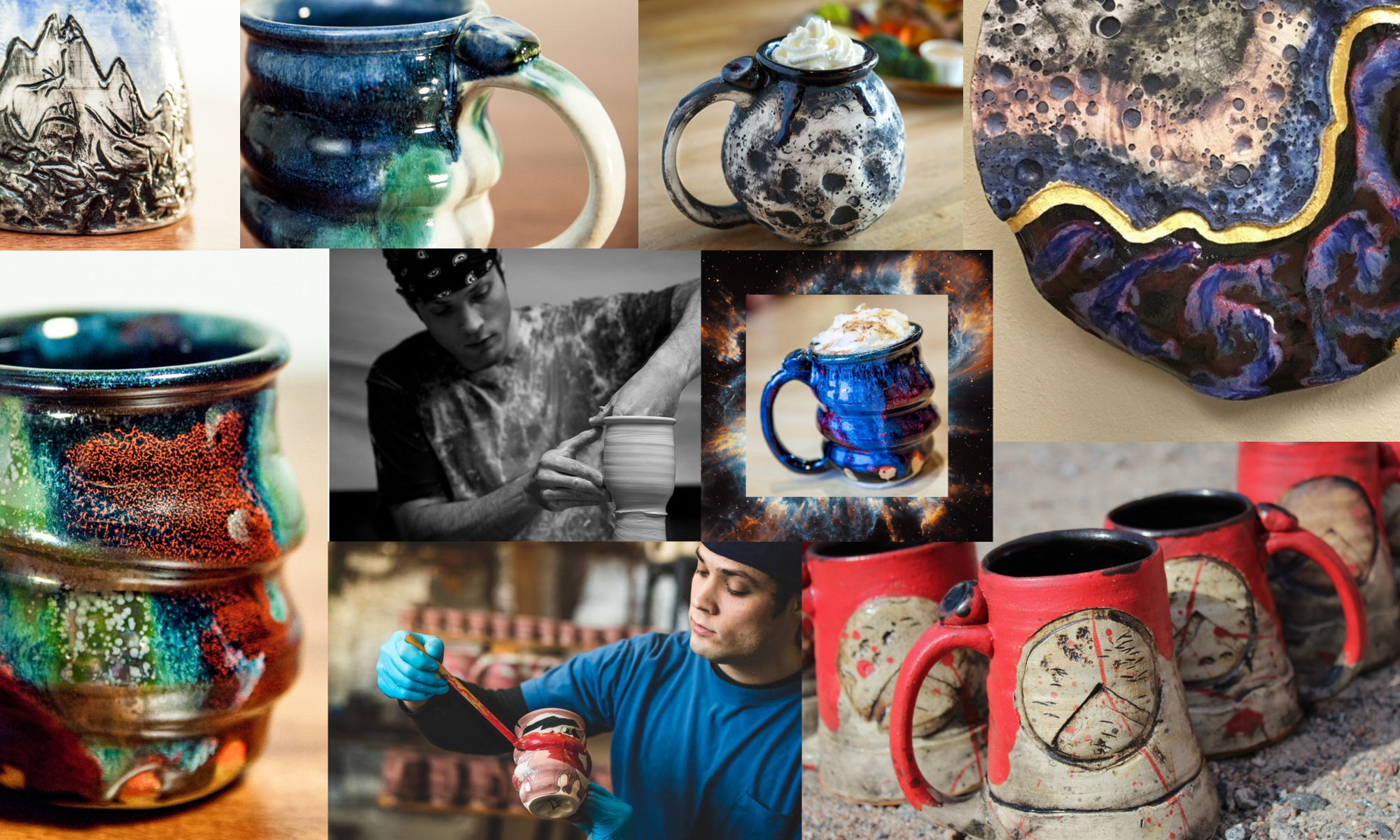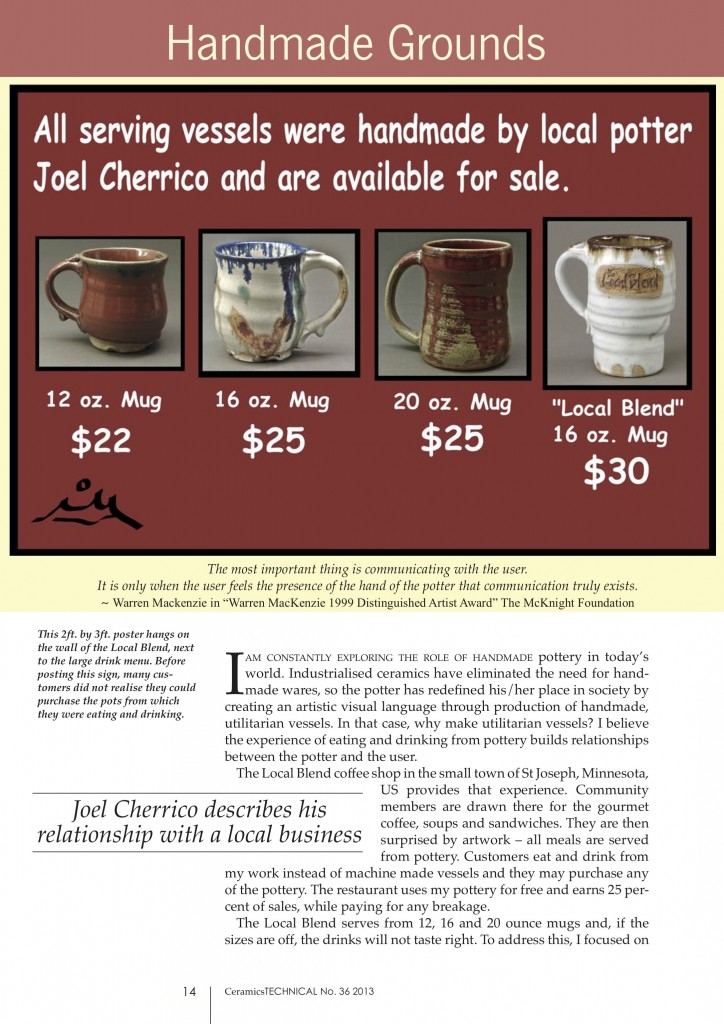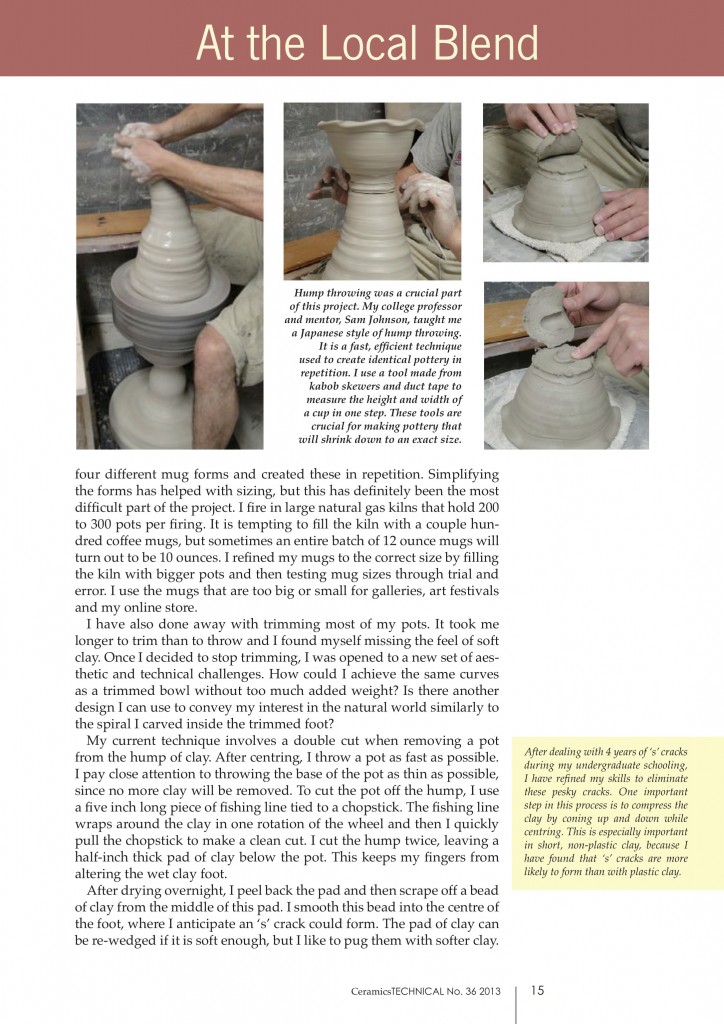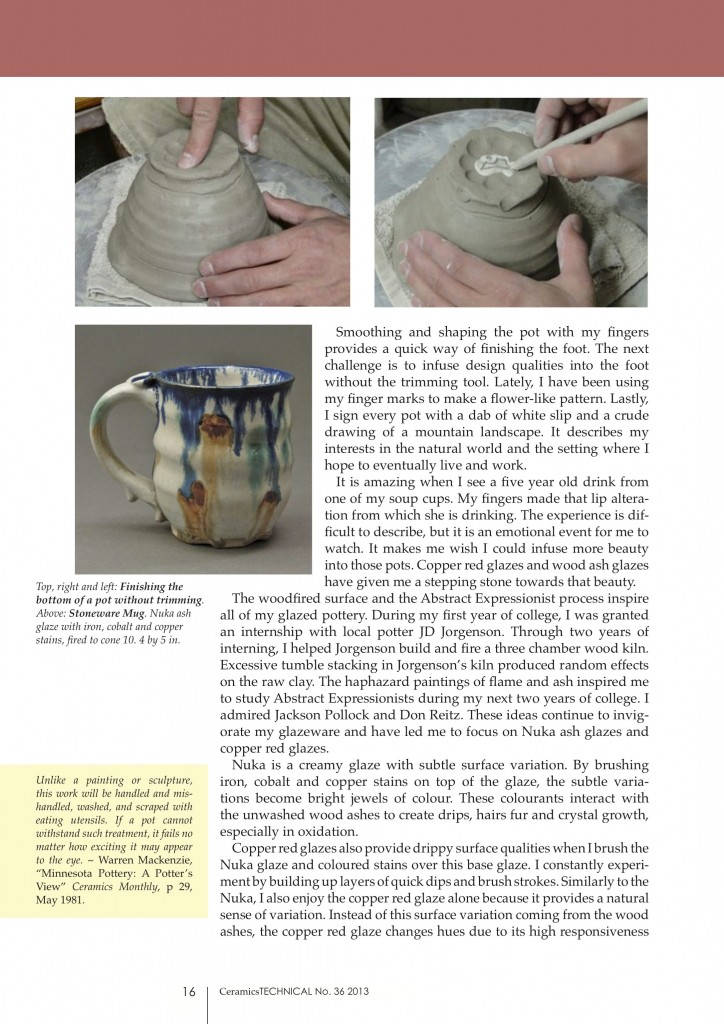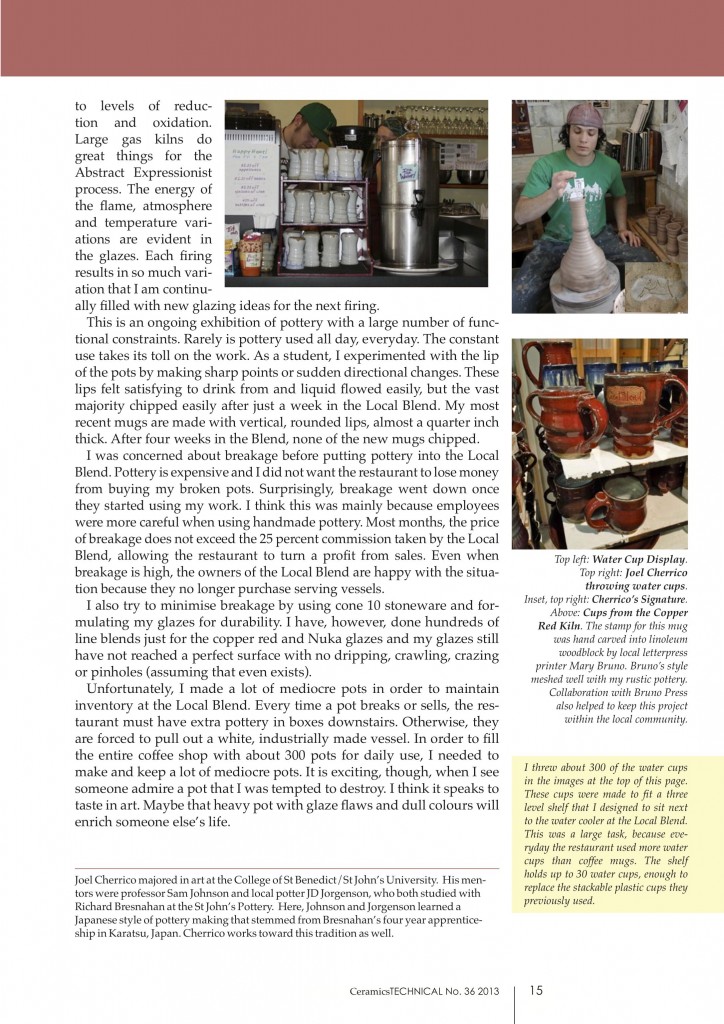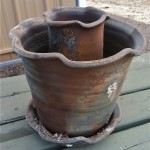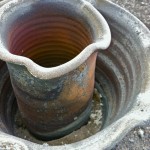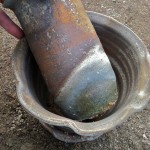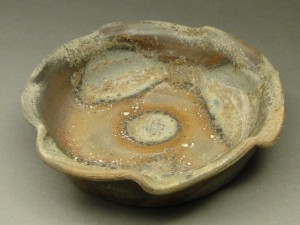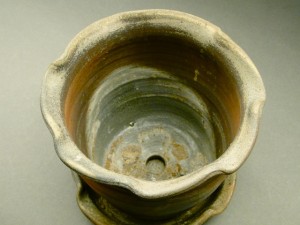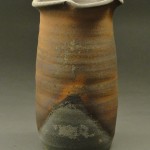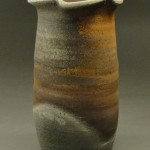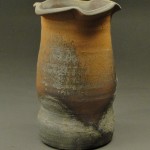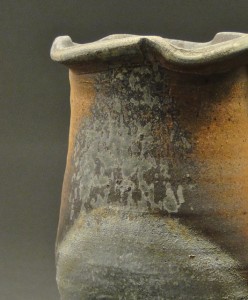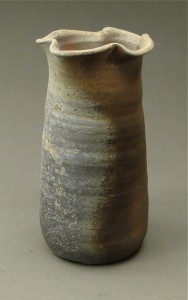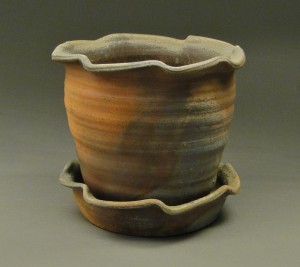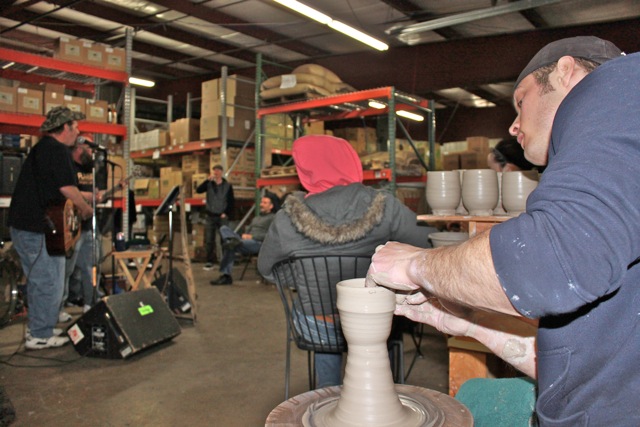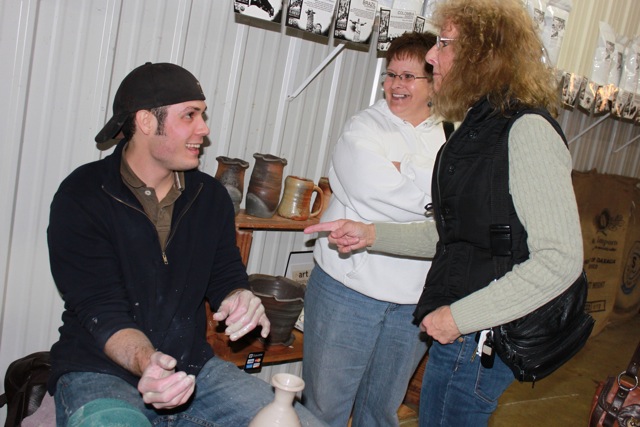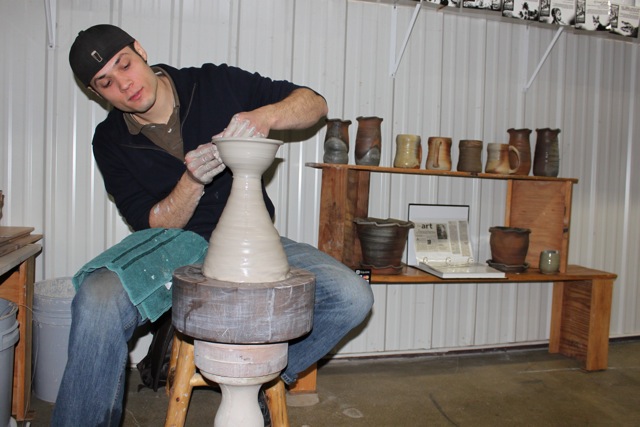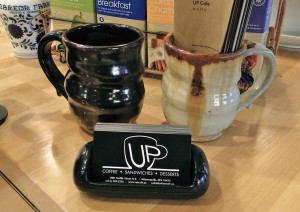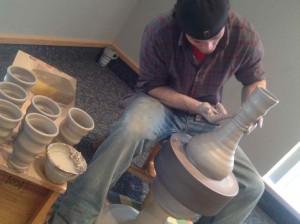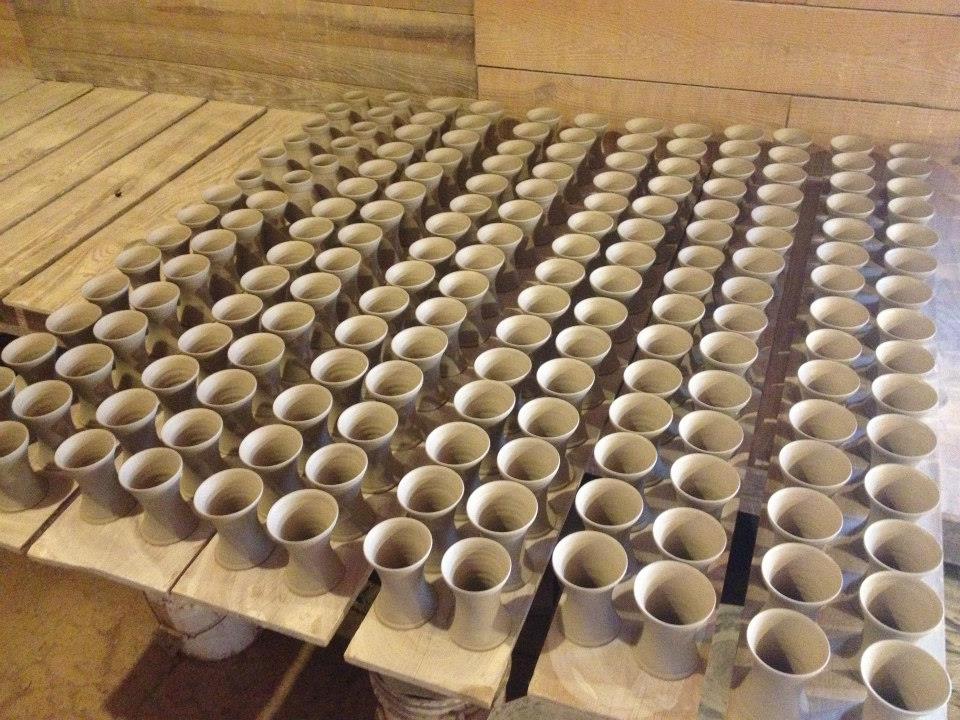Special thanks go out to Ceramics TECHNICAL for publishing my first major magazine article! The Local Blend has supported my career and helped me reach my 3rd year of business as a full time artist! You can read about our relationship in the 4 page article below, or purchase a hard copy of the magazine through their website:
Wood Firing Pottery in Saggars
“‘Let the pots speak,’ Mackenzie often says. He’s right: the pots do speak. In their materials they speak of the earth. In their glazes, you will find water, clouds, the colors of the seasons.” – David Lewis, Warren Mackenzie: An American Potter, Kodansha International, New York: 1991.
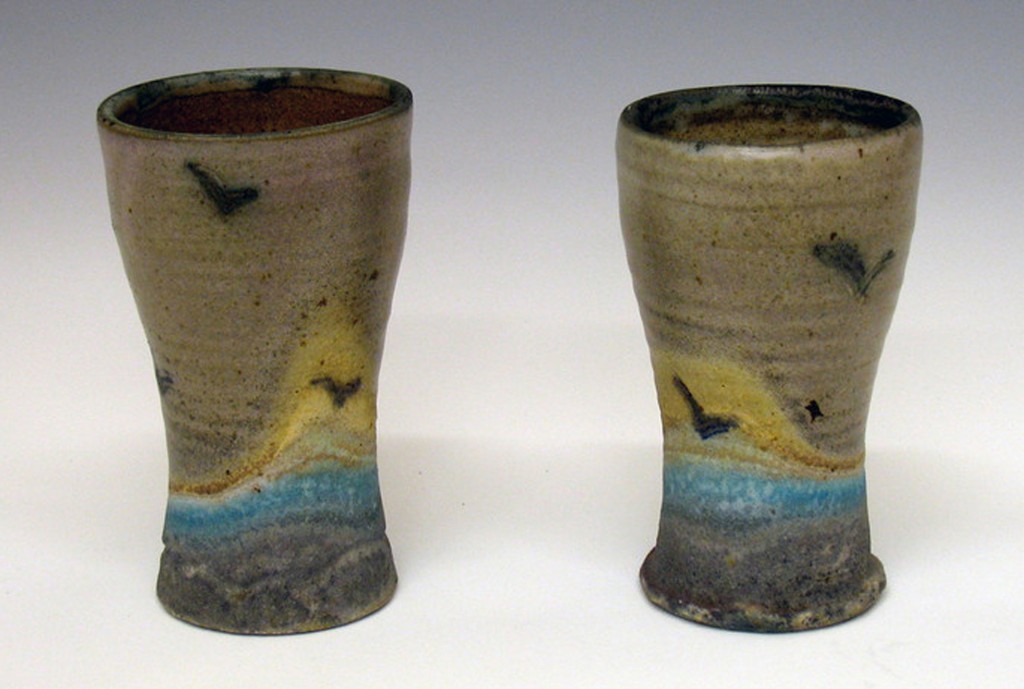
Oceanscape Cups, Stoneware, wood ash glaze, cobalt stain, gas fired, reduction, saggar fired in wood ashes, 2008.
Wikipedia gives a pretty good definition of a saggar. They were used historically for stacking pots in kilns before kiln shelves were invented. Saggars are essentially containers that hold pots in the kiln, while offering an opportunity to affect color. Inspired by this concept, I’ve been experimenting with efficient ways to stack my pots for wood firings, because wood fired pots can be “tumble stacked” on top of each other. I made a new series of wood fired vases, accompanied by planters that acted as a type of saggar for each vase.
Before the firing, I poured a pile of wood ashes into each planter. The ashes melted during the firing and naturally glazed the pots, as you can see on these pieces below that were photographed during the unloading of the S. Dennis Wood Kiln on the College of St. Benedict campus. This was the 2nd firing of the kiln, which was built last summer. Check out this cool article and video about the history of the kiln, featuring my old college professor Sam Johnson:
http://wjon.com/st-bens-professor-builds-kiln-to-ignite-art-interest-video/
The tray underneath this planter was made to catch water when the pot is planted and finished, but it also worked to keep the pile of ashes from spilling out the bottom hole in the planter. These 2 images below show how the inside of the planter and tray picked up some nice blue-gray hues from the ashes.
The vases picked up color in about 4 different ways: 1.) the blue-gray bottom from being completely covered in ash, 2.) orange flashing due to flame painting the clay surface, 3.) a dusting of fly ash floating through the kiln, and 4.) greenish, drippy splotches higher up on the vases.
This detail shot shows a close up of the greenish, drippy splotches. I think these are really unique marks because they came from fine particles of ash that stuck to the shoulder of the vase while I was pouring ash into the planter/saggar. The ash sat on the vase until it melted into a green glaze at high temperature, providing some nice texture and color contrast.
During the wood firing, flame and ashes surrounded the pottery for about 3 days. Most of my vases and planters were near the bottom of the kiln where charcoal built up as we stoked plank after plank of wood into the kiln. The charcoal burned down into ashes, and these pots resulted with similar effects as the planters/saggars that I filled with wood ash. These two pots below were partly buried in charcoal. The blue side is the face of the pot that was covered with coals, while the brown or orange sides were colored by the flame path.
Dick Lehman wrote about these types of surfaces in a 2004 Ceramics Monthly article titled, “Towards a Vocabulary for Wood-Fired Effects.” He referenced Japanese words that have been developed over hundreds of years, and he used these words to describe certain types of wood fired surfaces on his pots. I enjoyed how he gave names to wood fired surfaces because I like the idea of being able to identify and recognize effects from the kiln. He tells how these terms provide “visual literacy,” which is probably much more helpful than the “green drippy splotches” that I described above.
Art-A-Whirl at Up Cafe in Northeast Minneapolis
Next weekend marks my premier showing at Art-A-Whirl in NE Minneapolis! I’m very excited to join this thriving art community, as this is the “largest open studio tour in the country.” While my studio is not in the area, I will be at Up Cafe for 3 days with my pottery wheel, performing pottery throwing demonstrations and showing my newest body of work. Check out the Art-A-Whirl website for an artist directory and map:
http://nemaa.org/art-a-whirl/artist-directory-guide
Also check out my NEMAA profile here:
https://nemaa.org/directory/10915
I also want to thank all the folks at Up Cafe for such an awesome grand opening party last Friday. Despite the weather, we had a great turnout and I hope the good energy will continue into the Art-A-Whirl event next weekend! Check out this article on “Twin Cities Daily Planet” about the opening last week:
http://www.tcdailyplanet.net/blog/amy-doeun/grand-opening-cafe
p.s. today is my Birthday!! My b-day wish: everyone head to Up Cafe next weekend for Art-A-Whirl!
Photos from the Grand Opening Party, by Michael Applen
Grand Opening Party at Up Cafe, NE Minneapolis
Friday, May 3rd marks the Grand Opening Party of Up Cafe, a new gourmet coffee shop in northeast Minneapolis. Check out their website for the official invite to the party, or RSVP on their facebook page:
http://upcafe.us/posts/grand-opening-party/
https://www.facebook.com/events/226473267495589/
I’ll be there with my pottery wheel performing throwing demos, and you can order a cup of coffee from one of my mugs!
Working Towards a Standard Through Production Pottery
“…a good design in pottery is the product of tension or ‘dialectic’ between the demands of pure utility and those of pure beauty, and only a long experience and continual struggle enables you to achieve a successful fusion of the two.”
– Michael Cardew, quoted in “Michael Cardew, a portrait” by Garth Clark, pg. 46
In recent years, I’ve been drawn to a type of pottery known as “standard ware.” Warren Mackenzie is a renowned Minnesota potter at 89 years young, still making pots in Stillwater, MN. He descries standard ware as repeated forms with the same shapes, as opposed to individual pots with varying forms, shapes, colors, etc. Warren studied under English potter Bernard Leach, who was a pioneer in the resurgence of folk pottery traditions just after World War II.
After studying the Leach Pottery, I was amazed by 2 things: 1.) Bernard Leach mostly created pots as individual art objects, and 2.) The Leach Pottery Studio, largely operated by a crew and led by his sons, found great success through high production standard ware:
Mark Hewitt is a contemporary potter living in North Carolina, who studied similar folk pottery traditions for high production. I snagged this photo from his facebook page recently. The caption was, “180 Sunday, handled today, decorate tomorrow, start loading Thursday. The making cycles seem to get shorter…”
Holy cow that’s a lotta mugs. Isaac Button, a British potter from the mid 20th Century, is another skilled dude that could bust out a ridiculous number of pots each day. He was renowned for throwing a TON of clay in a day…literally, 2,000 lbs. Check out this youtube clip for just a small taste of his skills: (video link)
What place does standardware have in contemporary ceramics? I’ve been drawn to these pottery production techniques because of the pottery I make for the Local Blend and Up Cafe. Restaurant pottery requires:
- consistent sizes (for correct food and drink portions)
- thick, rounded edges (or they’ll chip and break)
- durability (good ole’ Stoneware clay seems to do the trick)
- stackability (to fit dish racks)
- high quantity (at least 100 for use each day, a LOT more for restocking)
- consistent, glossy glazes (for easy cleaning- a coffee mug at the Blend could be washed up to 5 times each day!)
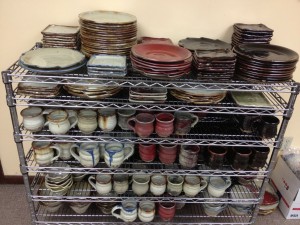 These 2 little cafes require hundreds of finished pots so people can eat and drink their whole meal from pottery everyday. Plus, the pots sell pretty consistently and break every so often…so the ability to restock with new pottery is crucial. Standardware is a tradition that seems to fit perfectly with these 2 restaurants, as long as I can keep up on the high production as an individual artist….
These 2 little cafes require hundreds of finished pots so people can eat and drink their whole meal from pottery everyday. Plus, the pots sell pretty consistently and break every so often…so the ability to restock with new pottery is crucial. Standardware is a tradition that seems to fit perfectly with these 2 restaurants, as long as I can keep up on the high production as an individual artist….
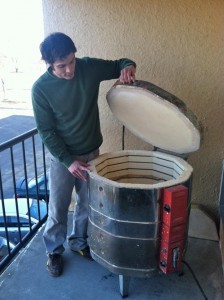 My new project for more consistent standardware…electric firing? We’ll see! I was gifted this kiln from an aspiring potter and friend Sue. She said, “You just figure out how we can get better, more consistent glazes and let me put them on my pots!” Even at 40+ years old, these puppies aren’t cheap- what a great gift! That’s the excitement that drives me to work towards a standard!
My new project for more consistent standardware…electric firing? We’ll see! I was gifted this kiln from an aspiring potter and friend Sue. She said, “You just figure out how we can get better, more consistent glazes and let me put them on my pots!” Even at 40+ years old, these puppies aren’t cheap- what a great gift! That’s the excitement that drives me to work towards a standard!
